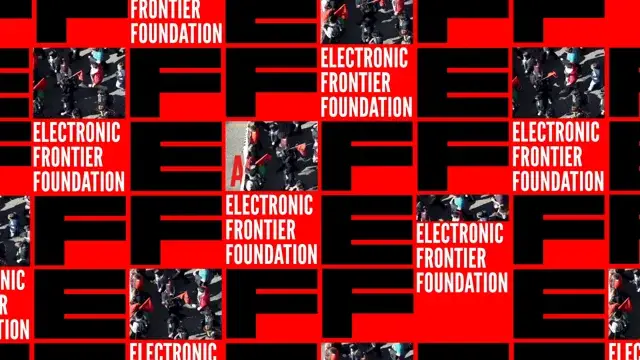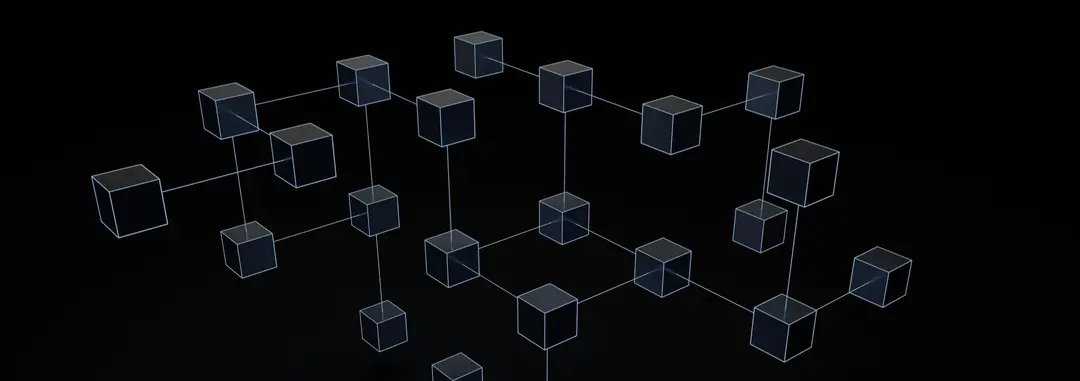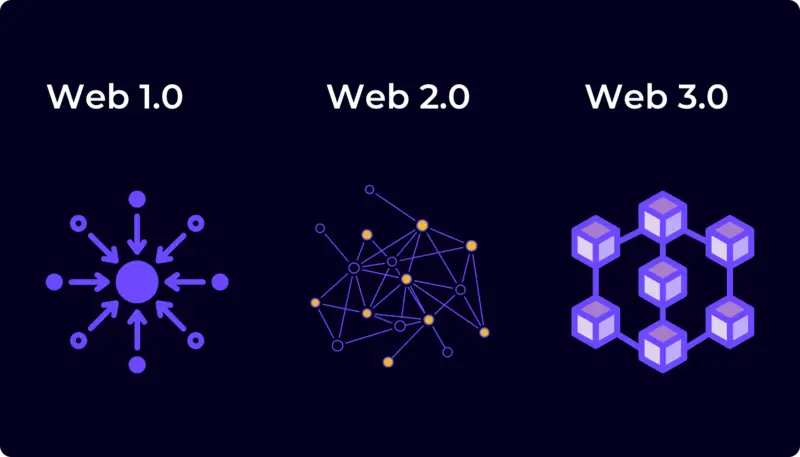Date: 9-10 AM SGT, August 13th 2024 / 9-10 PM EST, August 12th 2024
Session Title: The Future of Decentralized Social Networks
NTU I&E x HackQuest MOOC is free and open to all individuals interested in Web3. The MOOC is led by top voices in crypto including Yat Siu (Co-founder, Animoca), Ed Felten (Co-founder, Offchain Labs), Sergey Gorbunov (Co-founder, Axelar), Scott Moore (Co-founder, Gitcoin), Haider Rafique (CMO, OKX), Austin Griffith (Developer Onboarding, Ethereum Foundation), Anna Yuan (Stablecoins Lead, Solana Foundation), and many more. For those who prefer having a text summary and review material, this study note provides a recap of what’s covered during the MOOC. Happy learning!
Main Topic:
●The Role of Decentralization, Cyberspace Independence, and Activism in the Evolution of Web3
Objectives:
1.Understanding the concept of cyberspace independence and its historical context.
2.Exploring the parallels between tech giants and historical colonial powers.
3.Examining the stages of cyberspace colonization and resistance.
4.Discussing the future of decentralized finance, social networks, and the potential for new digital societies.
Section 1: Cyberspace Independence and Decentralization
1.1 Declaration of Independence of Cyberspace
●The concept of cyberspace independence is rooted in the 1996 Declaration of Independence of Cyberspace by John Peter Barrow, co-founder of the Electronic Frontier Foundation (EFF).
●This declaration was a pioneering statement that envisioned cyberspace as a new domain, free from the control of traditional nation-states like the United States or China. It called for the establishment of cyberspace as an independent realm where individuals could interact without the interference of governmental authorities, promoting freedom, innovation, and self-governance.
1.2 The Importance of a Free and Open Internet
●The ongoing movements in open-source software, the proliferation of cryptocurrency, and the push for decentralized internet services are seen as manifestations of the ideals expressed in the 1996 declaration. ●The evolution of the internet from a controlled space dominated by a few large entities into a decentralized network reflects the broader struggle for independence and autonomy. This mirrors historical efforts to establish independent nations, where a collective vision drives the creation of new governance models.
●In this context, the internet is evolving into a cyberspace where individuals and communities can operate independently of traditional state and corporate powers.
(Source: Pentagram)
Section 2: Comparing Tech Giants to Historical Powers
2.1 Historical Comparisons
●Today's tech giants are compared to the colonial powers of the past, like the British and French empires. Just as these empires sought to expand their control over new territories to extract resources and wealth, modern tech companies are seen as colonizers of cyberspace. They gather vast amounts of data, exert influence over information flows, and shape the digital landscape to serve their commercial interests. This comparison highlights the centralization of power in the hands of a few corporations, which is counter to the vision of a free and open internet.
2.2 The Role of Cyberspace in Modern Conflict
●The current geopolitical conflicts between superpowers, such as the United States and China, can be understood through the lens of historical conflicts between empires.
●In this analogy, cyberspace is the new battleground where these powers compete for dominance. Smaller countries and independent entities within cyberspace are akin to the colonies and pirate-controlled territories of the past.
●These smaller players often struggle to maintain their autonomy in the face of overwhelming pressure from the larger powers, yet they also represent potential sources of innovation and resistance against the dominant forces.
(Source: Unsplash)
Section 3: The Future of Cyberspace and Decentralization
3.1 Stages of Cyberspace Colonization and Resistance
●Stage 1: The initial stage of cyberspace colonization began in the wake of the dot-com bubble. The burst of this bubble ignited interest in the potential for profit within cyberspace, leading to the early efforts of superpowers and large corporations to assert control.
●During this time, the focus was primarily on establishing dominance through the creation of centralized platforms and services that could harness the economic potential of the internet.
●Stage 2: As these efforts matured, significant business opportunities arose, with tech giants earning substantial profits. These companies, while driven by commercial interests, also began to represent state power in various forms. Their influence extended beyond mere economics, shaping cultural, social, and political landscapes as they integrated more deeply into everyday life.
●The monopolization of data and the centralization of internet infrastructure became key features of this stage.
●Stage 3: In response, resistance movements have begun to emerge. These movements, often aligned with the principles of Web3, advocate for decentralization, the return of data ownership to individuals, and the creation of an internet that is more democratic and less controlled by centralized powers.
●This stage is likened to the rise of a revolutionary force, akin to the Jedi in popular culture, who use the tools of decentralization to challenge the established order.
●Web3 represents a critical phase in the evolution of the internet, characterized by the shift from centralized control to user empowerment. In this phase, individuals can own their data, participate in decentralized finance (DeFi), and engage in governance through decentralized autonomous organizations (DAOs). Web3 is seen as the foundation for a new kind of digital society, where the principles of self-governance, transparency, and community-driven development are central. ●The potential for Web3 to enable the creation of new digital states or entities within cyberspace is explored, much like the founding of independent nations in the physical world.
(Source: World Economic Forum)
Section 4: Practical Applications and Future Directions
4.1 Building a New Digital Society
●The idea of creating new digital states within cyberspace is more than a theoretical concept; it's a practical application of the technologies and principles emerging from the Web3 movement. Decentralized finance (DeFi) and smart contracts can provide the economic infrastructure for these digital societies, enabling them to operate independently of traditional financial systems. The vision includes the establishment of digital communities that are self-sustaining, with their own currencies, governance systems, and social structures.
●These societies could operate outside the jurisdiction of traditional nation-states, offering a new model for how humans can organize and govern themselves in the digital age.
4.2 Relating Historical Examples to Modern Technology
●Historical examples, such as Dr. Sun Yat-sen's revolutionary activities, are used to illustrate the potential of modern digital assets like meme coins in driving political and social change. Just as historical revolutions required innovative strategies and the use of available resources to challenge existing powers, today's digital movements can leverage technologies like blockchain and cryptocurrency to achieve similar goals.
(Source: Bitpanda)
The discussion highlights the parallels between the historical struggle for independence and the modern quest for cyberspace autonomy. Today's tech giants are likened to colonial powers, exerting control over the digital landscape much like empires of the past. The rise of Web3 and decentralized technologies offers a pathway to resist this control, enabling the creation of independent digital societies that operate outside the influence of traditional state and corporate powers. However, the journey to achieving true cyberspace independence is complex, requiring innovative approaches, long-term commitment, and a deep understanding of both historical precedents and modern technological tools. As these movements evolve, they hold the potential to reshape the internet and create new models of governance and societal organization in the digital age.
1.Question: Who exactly are the colonizers here?
●Answer: The colonizers in cyberspace are governments and large corporations, particularly superpowers. These entities exert control over key aspects of the internet, such as the domain name system, often through organizations influenced by governmental and corporate interests. This control is akin to the way historical empires expanded their territories to extract resources and exert influence.
2.Question: What is the current situation for SocialFi?
●Answer: SocialFi, which involves the financialization of social interactions, is currently in a gray area, often resembling the trading of stocks or securities. While there is potential for SocialFi to be used for revolutionary purposes, such as decentralizing social networks and empowering users, its current implementation often involves speculative activities, such as trading friends like stocks. This raises legal and ethical concerns, as it operates in a space that is not fully regulated and may be seen as exploiting human relationships for profit.
3.Question: How is Mask Network uniquely positioned to be the next big thing in SocialFi versus others like Farcaster and Lens?
●Answer: Mask Network is uniquely positioned because it addresses the deeper issues of decentralization and cyberspace independence that other projects may overlook. Mask Network's approach is grounded in a broader understanding of the need for autonomy in cyberspace, focusing not just on the financial aspects of SocialFi but also on the political and social implications of decentralization. This holistic perspective gives it a unique edge in the rapidly evolving landscape of decentralized social networks.
4.Question: What is the best Network State practice you have seen?
●Answer: There have been several interesting experiments in the concept of Network States, such as G0V in Taiwan and CityDAO. However, none of these experiments have yet reached a significant turning point or proven to be fully successful. The concept of a Network State—a digital or physical community that operates independently of traditional nation-states—is still in its early stages, with many challenges to overcome before it can be considered a viable model for governance and societal organization.
5.Question: Isn’t launching a meme coin the best way to start a Network State? Why haven’t these meme coin communities become Network States?
●Answer: Meme coins, while powerful in capturing attention and rallying communities, do not automatically translate into successful Network States. The success of a Network State requires more than just a popular meme coin; it needs long-term commitment, a strong underlying political or social vision, and the ability to navigate complex legal and governance challenges. Historical examples, such as Dr. Sun Yat-sen's revolutionary efforts, show that while meme-like elements can galvanize support, they must be part of a broader strategy to effect real change.



